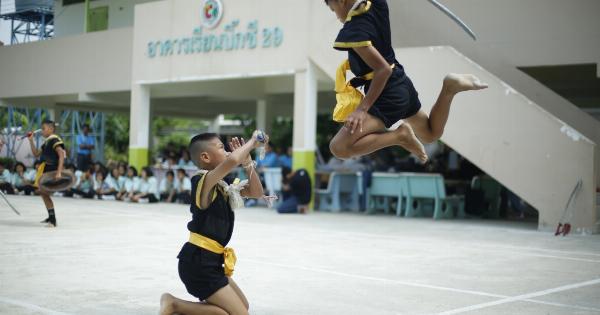Seizures can occur unexpectedly and sometimes in school settings, making it crucial for teachers to be prepared to provide seizure first aid.
Whether a teacher is working with students who have a known seizure disorder or encounters a student experiencing a seizure for the first time, having the knowledge to respond effectively can make a significant difference. In this article, we will discuss the steps teachers can take to provide seizure first aid, ensuring the safety and well-being of their students.
Recognizing the Signs of a Seizure
Before delving into seizure first aid, it is essential for teachers to be able to recognize the signs of a seizure. Some common signs include:.
- Loss of consciousness
- Uncontrolled shaking or jerking movements
- Staring spells
- Confusion or disorientation
- Unresponsiveness
- Difficulty speaking or slurred speech
It’s important to note that not all seizures are the same. Some seizures may involve only certain parts of the body, while others may cause a person to become temporarily unresponsive.
Creating a Safe Environment
When a teacher becomes aware that a student is experiencing a seizure or suspects a seizure is about to occur, creating a safe environment should be the first step. Here are some actions teachers can take:.
- Calmly guide other students away from the area to minimize distractions and prevent any accidental injuries.
- Clear any sharp or potentially harmful objects from the immediate vicinity to ensure the safety of the seizing student.
- Assist the student in moving to a soft and protected area, such as the floor, to prevent falls and minimize the risk of injury.
By creating a safe environment, teachers can reduce the chances of the student sustaining harm during a seizure.
Timing the Seizure
During a seizure, it is crucial for teachers to keep track of the seizure’s duration. By timing the seizure, teachers can provide more accurate information to medical professionals if necessary.
They can use a stopwatch or simply note the time when the seizure begins and ends. It’s important to remember that most seizures last for only a few minutes.
However, if a seizure lasts longer than five minutes or if the student experiences multiple seizures in a row without fully regaining consciousness, immediate medical attention should be sought.
Do’s and Don’ts During a Seizure
Teachers should keep in mind several do’s and don’ts when providing seizure first aid:.
Do:
- Remain calm and stay with the student throughout the seizure.
- Protect the student’s head by cushioning it with a soft object, such as a folded jacket or towel.
- Loosen tight clothing, such as ties or collars, to facilitate easier breathing.
- Keep the area around the student clear of any objects.
- Time the seizure if possible.
Don’t:
- Restrain or hold down the student during the seizure.
- Insert anything into the student’s mouth, as it may cause injury.
- Try to bring the student back to consciousness forcefully.
- Panic or leave the student unattended.
Following these do’s and don’ts can help ensure the safety of both the student experiencing the seizure and the teacher providing seizure first aid.
After the Seizure
Once the seizure has ended, it’s essential for teachers to continue providing support to the student:.
- Help the student to reorient themselves and provide reassurance.
- Encourage the student to rest or seek medical attention if necessary.
- Allow the student to take their time before returning to normal activities.
- Notify the school nurse or other appropriate personnel about the seizure, ensuring the student receives any necessary follow-up care.
By offering support and notifying the appropriate individuals, teachers can help ensure the student’s well-being even after the immediate seizure has ended.
Training and Preparedness
All teachers should receive training in seizure first aid and be prepared to respond appropriately in case of an emergency. Schools can facilitate this by:.
- Offering regular training sessions on seizure recognition and first aid techniques.
- Providing teachers with written guidelines and instructions on managing seizures.
- Ensuring teachers are aware of any students with known seizure disorders and their specific needs.
- Collaborating with healthcare professionals to develop individualized seizure management plans for students who require them.
By prioritizing training and preparedness, schools can create a safer environment for all students, including those who may experience seizures.
Conclusion
Teachers play a crucial role in providing seizure first aid and ensuring the well-being of students who experience seizures.
By recognizing the signs of a seizure, creating a safe environment, timing the seizure, and following the appropriate do’s and don’ts, teachers can effectively respond to seizures. Additionally, offering support after the seizure and prioritizing training and preparedness can help schools create a safer and more inclusive environment for all students.































